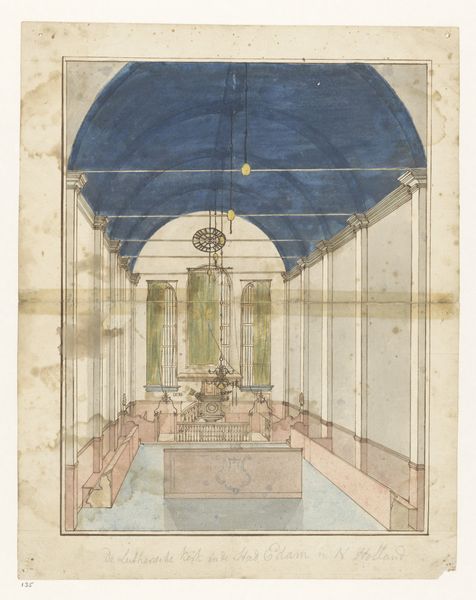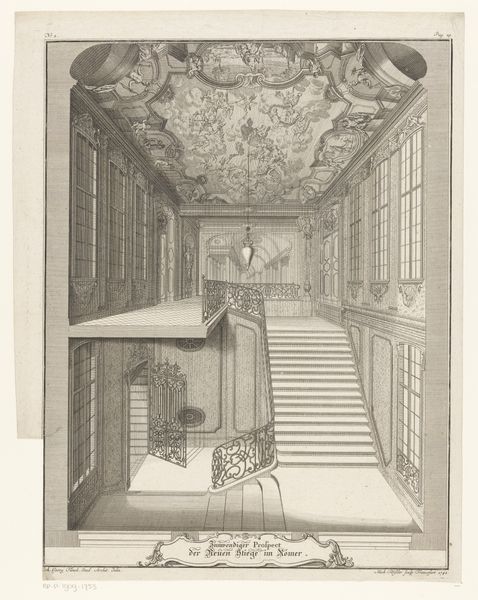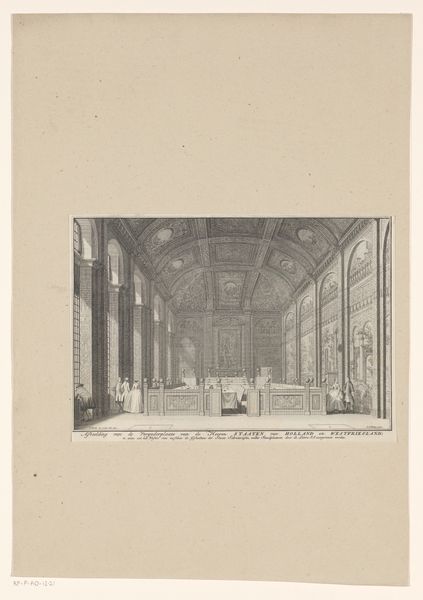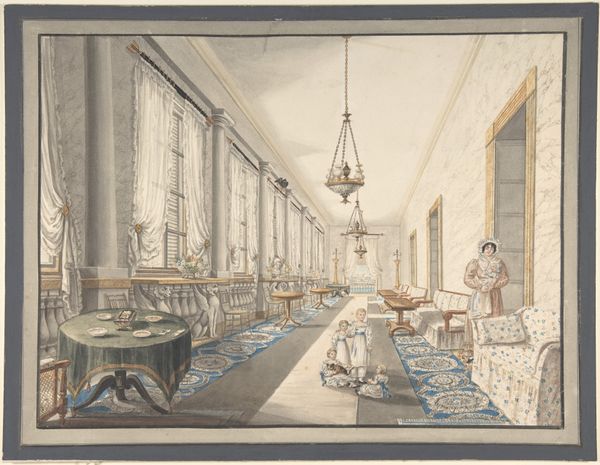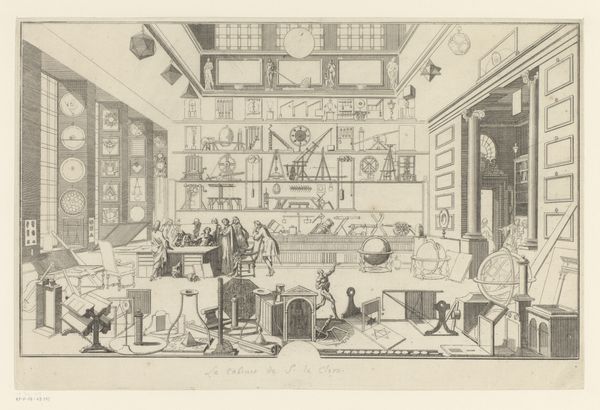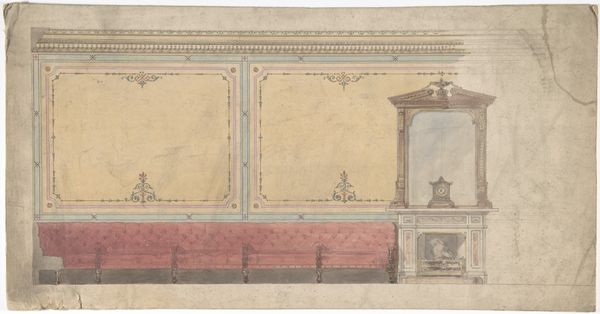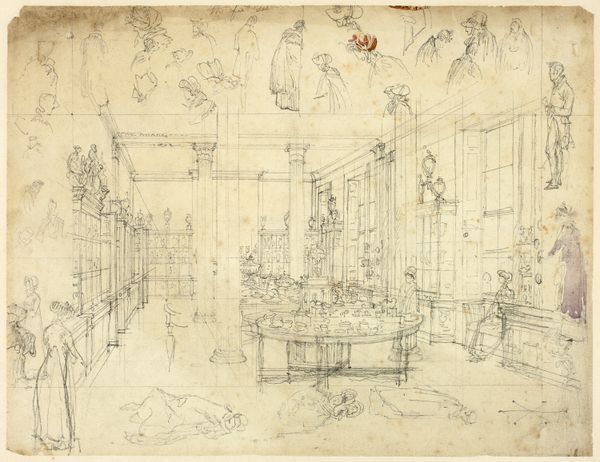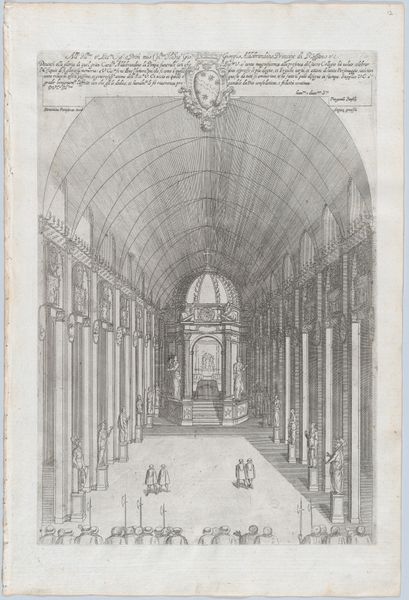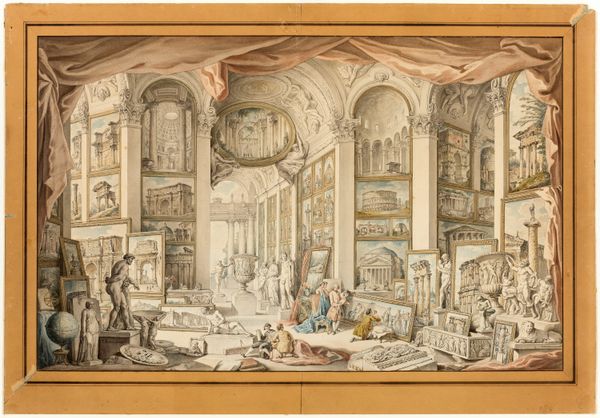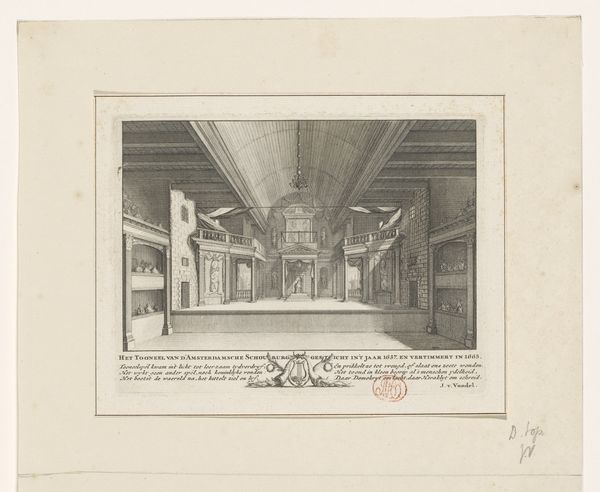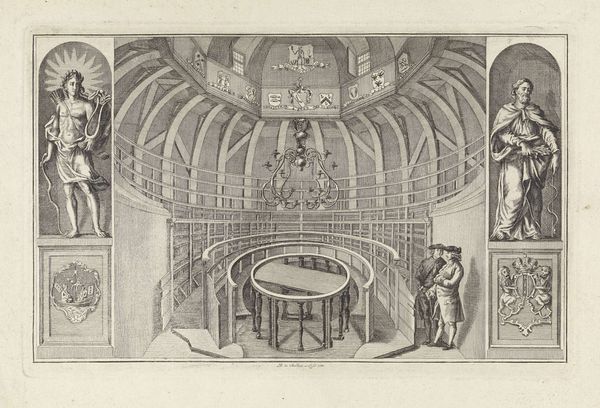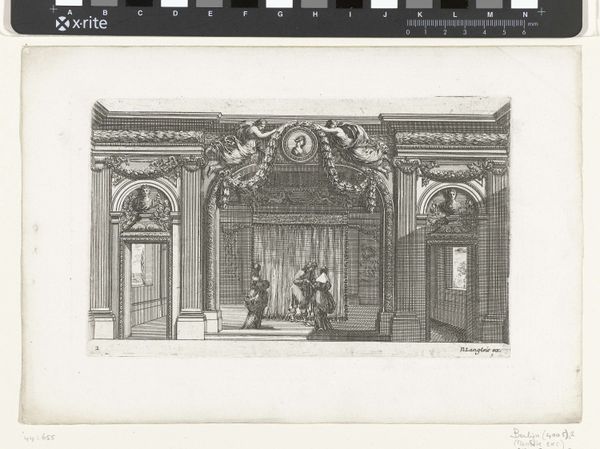
painting, watercolor, architecture
#
painting
#
perspective
#
watercolor
#
genre-painting
#
history-painting
#
academic-art
#
architecture
Dimensions: height 538 mm, width 518 mm
Copyright: Rijks Museum: Open Domain
Editor: This watercolor painting, “Evangelisch Lutersche Kerk binnen de stad Batavia in Oost-Indië,” created around 1785 by Jan Brandes, offers an interior view of a church. It feels very formal and orderly to me, but also quite… removed. What can you tell me about this piece? Curator: This is a fascinating record of a specific time and place. The scene itself, the Evangelical Lutheran Church in Batavia – now Jakarta, Indonesia – resonates with layers of meaning. Look at the almost architectural precision. It mirrors the societal structure of the Dutch East India Company's colonial presence, wouldn't you say? The light and airy space doesn't mask, but rather subtly highlights the rigid social hierarchy of the time, frozen like insects in amber. Editor: That’s a really interesting point about the rigidity. The perspective emphasizes the different levels so clearly. What symbols stand out to you in the scene? Curator: The organ, prominently placed, carries immense weight. Music, especially in religious contexts, signifies both spiritual uplift and social cohesion. In a colonial setting, consider how it functions – as a symbol of European culture imposed within an entirely different cultural context. Is it bridging divides, or emphasizing the separation? Notice also the almost clinical way individuals are arranged within pews. Their cultural memory seems subsumed within the structure of the space itself. What do *you* make of the positioning of figures, carefully divided by gender and status, perhaps? Editor: I didn’t pick up on the organ's symbolic imposition, but it’s such an obvious symbol once pointed out. Thank you! It completely changes my perspective of the painting. Curator: Exactly! That interplay is what makes art history so endlessly engaging. Seeing these images for their deeper context reveals much about humanity's development.
Comments
No comments
Be the first to comment and join the conversation on the ultimate creative platform.
